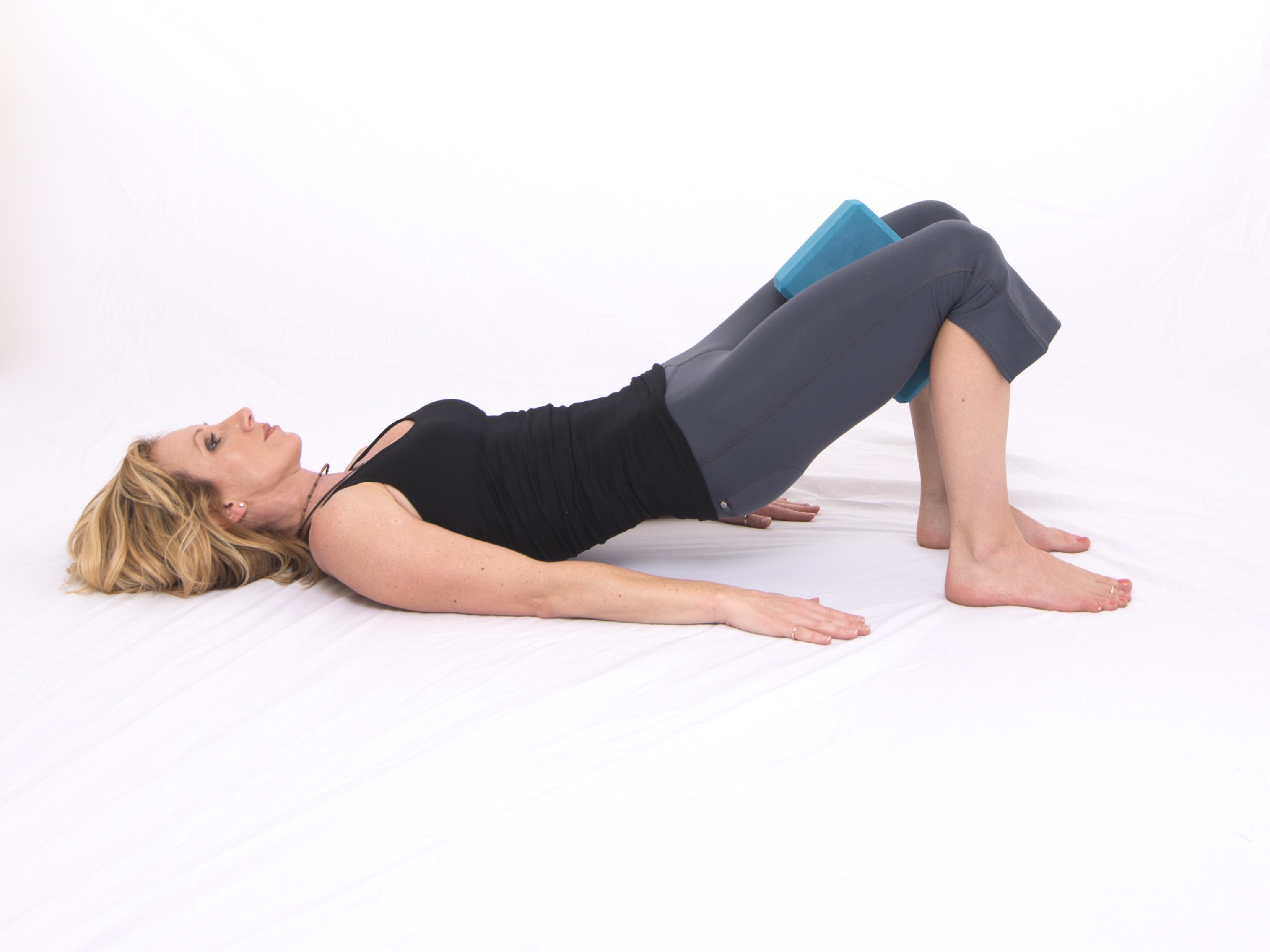IMPROVE MY GAME
Articles
Not All Yoga is Good for Golf But Proper Application Can Deliver Big Benefits

Despite the fact that yoga tends to be touted as the panacea for everything and, increasingly, as the answer to gaining an edge in sports performance—not all yoga is good for golfers. Becoming a yogi does not equate to becoming a PGA Tour player. In fact, spending hours doing arbitrary yoga poses to increase your flexibility could actually impede your functional movement, power and control on the links. That isn’t to say that all yoga is bad for golfers…more like, not all yoga is created equal, and its effectiveness is dictated by the quality of its application to the movement and mental demands of the game.
With so many different styles of yoga, “doing yoga” is a lot like going out to eat. What type of food? How good is the chef? Just as spicy Thai differs from traditional Italian, Ashtanga yoga differs from Hatha. And yoga teachers are akin to chefs in their range of acceptable qualifications; one chef may have graduated from culinary school with expertise in thai cuisine, while another might simply have a knack for making pasta. Unlike certifications for TPI, FMS or the NSCA, with prerequisites and a comprehensive exam to prove competency, specific credentials aren’t required for yoga instructors. Although “registration” with the Yoga Alliance tends to be considered the gold standard, its 200-hour programming leaves a lot to be desired when it comes to training athletes. Of the 200 hours, only 20 are designated for anatomy and physiology, which, depending on the program, could be solely devoted to eastern “energy” anatomy, like chakras.
So when you walk into just any yoga class—even one marketed to athletes—the quality and applicability of the instruction is subjective. Although it might seem like any yoga is better than no yoga, focusing on flexibility without addressing specific needs for stability and mobility could lead to imbalances, instability, power loss, and increased risk of injury that impedes sport performance. This is especially true for golf because it requires an enormous range of dynamic rotational motion, as well as the ability to execute precise, controlled movement within a much shorter range. Consequently, spending time opening hips and hamstrings to get your leg over your head isn’t going to help your handicap. That said, when yoga is taught by an instructor familiar with the Body-Swing Connection™ who can identify and apply yoga-based exercises to address the physical and physiological demands of the game, it can become a high performance training tool.
Because golf swings require powerful mobility through an enormous range in the hips and thoracic spine, any limitations in these areas will put undue compensatory stress on other areas of the body, like the low back, which requires stability. Essential to stability, mobility and power in a swing—and, arguably, all movements—is a functional diaphragm. Since the diaphragm is both a respiratory and postural muscle that attaches to the ribcage and lumbar spine while also running through the hip flexors, it influences ribcage position, shoulder girdle stability, shoulder mobility, t-spine rotation, pelvis position/movement, hip mobility/stability, low-back integrity and pelvic floor/core muscle strength and function—all of which enable a dynamic, fluid swing without a loss of balance or control.
As illustrated in the exercises below, building off a foundation of functional diaphragmatic breathing, golfers can use yoga-based methods to leverage breathing mechanics for better thoracic rotation while also strengthening deep core, pelvic floor and low-back stability to support enhanced hip mobility. And training better breathing can also improve golf’s mental-performance aspect via the physiological benefits that heighten mind-body control and mitigate stress response.
The following exercises are not only good for addressing overall mobility, stability and mental performance, but also as specific correctives based on the TPI Screen. Within each exercise’s description, I’ve noted its applicability to Screen deficits. Because these four exercises take players through all planes of motion, addressing both physical and physiological needs, they can be used effectively in a sequence as a pre-game or pre-workout warm up, or as individual exercises, as needed—even on the course or in the cart.
Bridge Breathing
 Breathing biomechanics-focused exercise to establish functional diaphragm use for optimal ribcage positioning/rib kinematics, core/pelvic floor integration, hip flexor release, glute firing and low-back stability.
Breathing biomechanics-focused exercise to establish functional diaphragm use for optimal ribcage positioning/rib kinematics, core/pelvic floor integration, hip flexor release, glute firing and low-back stability.
Applicable for TPI Screen Limitations: Pelvic Tilt/S-Posture, Bridge w/Leg Extension
Begin on your back with your knees bent and feet on the floor hip-distance apart about six inches from your bottom. Place a foam block or rolled towel between your legs to keep your hips from externally rotating and knees from splaying out. With your arms at your sides, slide your shoulder blades down to promote relaxation in your upper back and neck. Exhale until you completely empty your lungs. To do so, internally rotate your lower ribs and move your entire ribcage back and down toward your waist. This action should facilitate engagement of your low, deep core. Use the end of your exhalation as the initiator for tilting and lifting your pelvis a few inches off the floor. Avoid lifting too high and arching. Your transverse abdomunis and glutes should support your bridge—not your low back. Maintain this position as you take five long, deep breaths at a count of 5-second inhale, 7-second exhale, 3-second pause. Focus your breathing on lower-rib movement without disrupting your bridge stability. Inhalations should fill the lower lobes of your lungs, externally rotating your ribs (expanding laterally), and exhalations should internally rotate your lower ribs. During the pause, concentrate on internal oblique and low-deep core engagement. After five breaths, release your bridge and rest briefly. Repeat for another set.
Windmill Thoracic Rotation

Thoracic spine twist that leverages rib kinematics to enhance movement control and range; position also promotes release of tension in QL, hamstrings, and calves.
Applicable for TPI Screen Limitations: Seated Trunk Rotation, Toe Touch
From standing with feet hip distance, use an exhalation to squat down, bending both knees enough to place your left hand on top of a yoga block or other similar support. Inhale as you reach your right arm forward and rotate it upward (as pictured), moving from your shoulder, mid-back and ribcage to twist open to the right. At the same time, straighten your right leg while pulling back through your heel. You should experience a release in your hamstrings and calf, and across your right low back (QL). Hold for five breaths, using respiration to further the twist. Focus inhalations on expanding the open side of your ribcage (the side you’re turning towards), and exhalations on the opposite side, employing obliques to internally rotate your ribs into the twist. Unwind and repeat the movement, twisting to the left.
Flowing Lateral Lunge

Movement to promote hip mobility, pelvic function and ability to shift center of mass from hip to hip
Applicable for TPI Screen Limitations: Pelvic Rotation, Lower-Quarter Rotation, Single Leg Balance
Stand in a straddle with your feet about the width of your swing stance. Inhale to take your arms up, and exhale as you shift your center of mass (COM; also referred to as “center of gravity” or COG) into your right hip and lunge laterally, bringing your hands together at the middle of your chest. Inhale as you bring your COM back to center with your arms overhead. Exhale to shift COM left in a lateral lunge. Repeat, alternating your lunging for a total of 8-10 repetitions (four each side). Be precise and aware during the exercise, matching breath with movement and ensuring that you are fluidly shifting your balance back into your hip/glutes on each side.
Mini Mindfulness Meditation

90-second mindfulness breathing meditation to inhibit stress response and enhance focus.
Too often, golfers inadvertently let shallow breathing pull them into their sympathetic nervous system (fight or flight), making them feel anxious and out of control by stimulating production of cortisol, our primary stress hormone. Using diaphragmatic breathing, golfers can tap their parasympathetic nervous system (relax and restore), to proactively lower stress hormones, heart rate and blood pressure.
Because research shows that it only takes 90 seconds to initiate our physiological “relaxation response,” using the breathing count from the first exercise (5-count inhale, 7-count exhale, 3-count pause) you only need to take six breaths. From any position where you can find ease—seated on a yoga mat or in your golf cart, or even standing on the green—simply focus in on your breathing at the count noted above. Once your breathing pattern is established, slowly count six breaths. During the breathing exercise, bring all of your attention to the subtle sensations of your breath. Notice the expansion and contraction of your rib cage. Follow the path of air into your nose, down your throat, through your lungs and back again. If your mind wanders, bring it back to your breathing.

Dana Santas CSCS, E-RYT, is a TPI Level One and FMS Level One certified mind-body coach in professional sports and the exclusive yoga expert for CNN Health. Nicknamed the “Mobility Maker,” she’s the breathing & mobility coach for the Toronto Blue Jays, Philadelphia Phillies, Tampa Bay Rays, Atlanta Braves, Tampa Bay Lightning, and dozens of individual athletes in the NFL, NBA, NHL, MLB & PGA. Find her at MobilityMaker.com, on Twitter & Instagram (@MobilityMaker), facebook.com/DanaSantas and youtube.com/DanaSantas. /